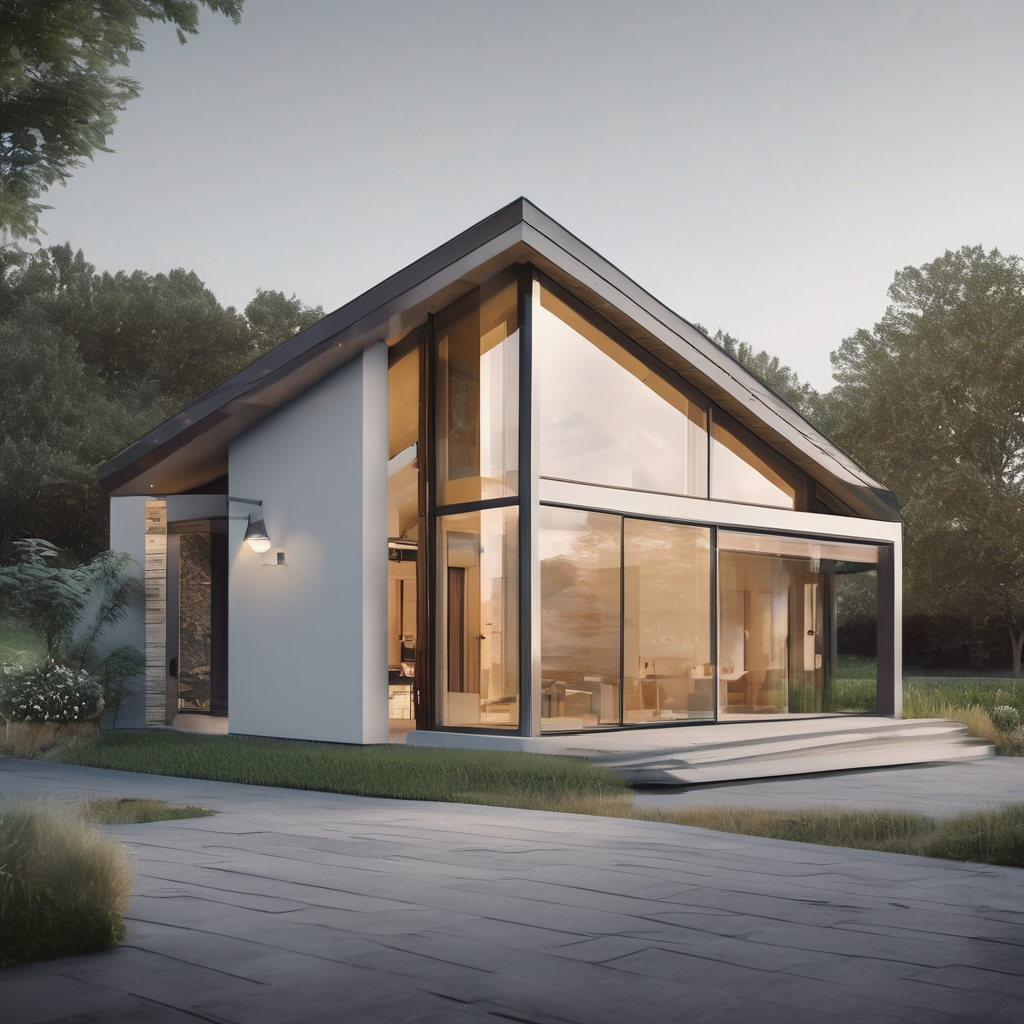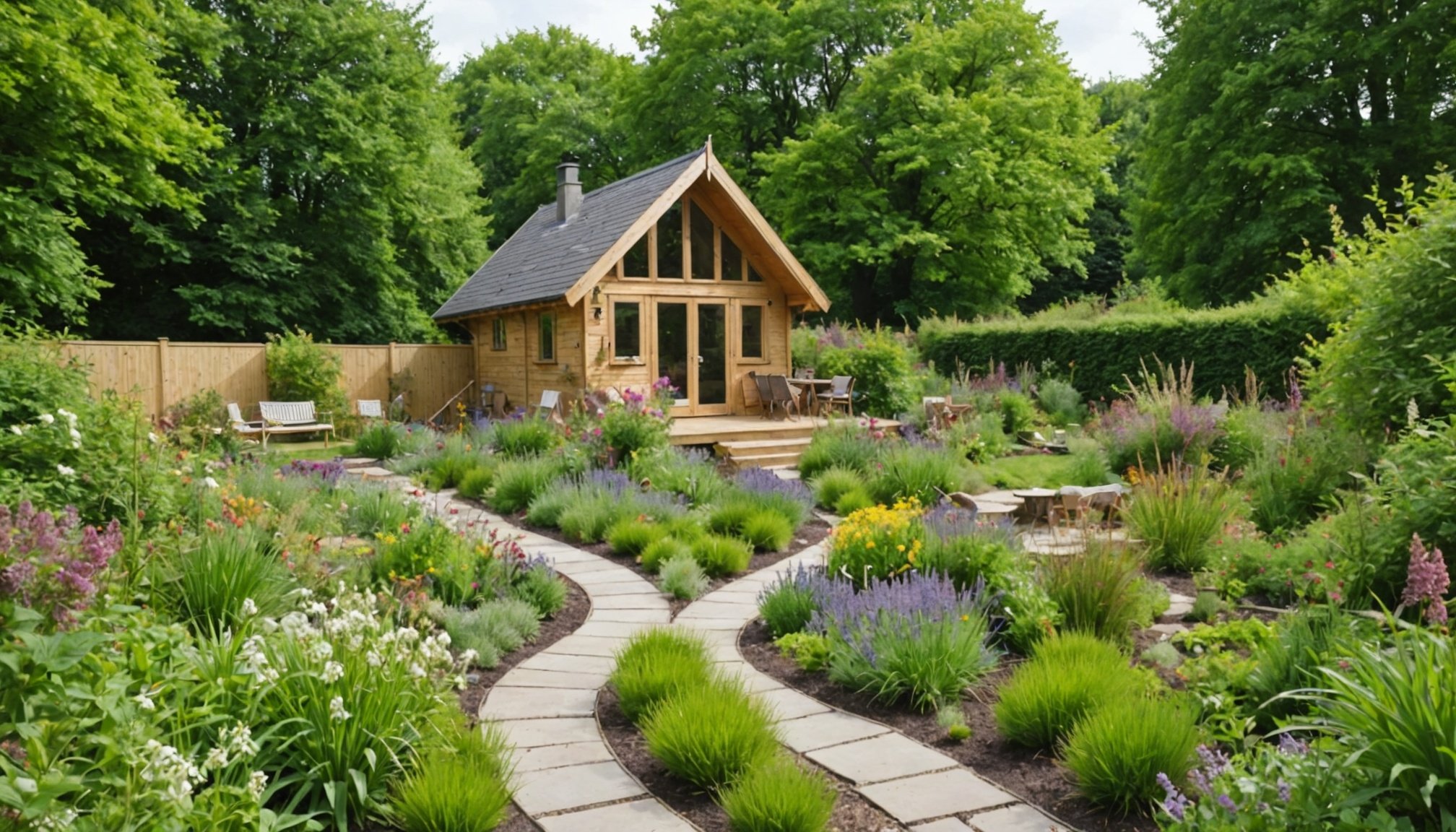Key Elements of a Nature-Inspired UK Sanctuary Garden
A serene blend of nature and design
A nature-inspired UK garden thrives on cultivating peace and restoration through thoughtful design. Central to this is the use of organic shapes that mimic natural landscapes, creating a flowing, harmonious environment. Curved pathways and rounded beds support a tranquil rhythm unmatched by rigid, geometric forms, inviting visitors into a calming space.
Additional reading : How Can You Boost Curb Appeal with Simple Garden Upgrades?
Incorporating natural materials like weathered wood, stone, and gravel enhances authenticity. These materials age gracefully in the UK climate, fostering a connection between the garden and its surroundings. Meanwhile, soft planting with native species, grasses, and flowering perennials not only adds texture and color but also supports local wildlife, reinforcing the sanctuary feel.
Sustainability is key; combining low-maintenance design features ensures ease without sacrificing beauty. Rain gardens, mulched beds, and drought-tolerant plants reduce water use and upkeep, making the garden both environmentally friendly and practical. This thoughtful approach elevates the concept of a sanctuary garden design, inviting lasting enjoyment and wellbeing.
Also to read : How can you design a UK home garden for year-round color?
Planning Your Sanctuary: Layout and Design Principles
Careful garden layout UK planning transforms outdoor spaces into personal sanctuaries. Start by identifying the best spots for relaxation, wildlife observation, and planting. Consider areas that receive optimal sunlight for flowers and vegetables, alongside shaded corners perfect for seating or meditation. Positioning these zones thoughtfully enhances usability and enjoyment.
Incorporate natural landscaping elements to create seamless transitions between areas. Gentle curves in pathways reduce harsh geometric lines, fostering a calming, organic feel. Secluded seating spaces tucked away behind foliage provide privacy and a closer connection to nature. Such design ideas invite leisurely wandering and quiet reflection.
Visual tools can greatly assist this process. Sketching layouts, compiling inspirational photos, or using specialized garden planning apps allow you to experiment easily before final commitment. These methods help visualize how the garden layout UK will function and flow, ensuring all elements—from natural pathways to planting beds—harmonize beautifully.
By blending these principles, you cultivate a garden that’s not only visually appealing but also supports mental wellbeing and local wildlife. Embracing natural landscaping with thoughtful design ideas turns your garden into a true sanctuary.
Selecting Native Plants for Structure and Seasonal Interest
Choosing the right native UK plants can transform your garden into a vibrant, wildlife-friendly habitat with visual appeal throughout the year. When aiming for structure and seasonal interest, begin with sturdy native trees like English oak and silver birch. These create a backbone, offering height and shelter for birds and insects alike. Adding native shrubs such as hawthorn and dogwood provides mid-level texture and vibrant berries, supporting local fauna through autumn and winter.
For continuous colour, blend native perennials and wildflowers that bloom sequentially. Early-season blooms like primrose and bluebell herald spring, while summer brings in meadow buttercup and red campion. Late flowering species such as heather and greater knapweed extend interest into autumn.
Opt for low-maintenance species that naturally thrive in UK climates, reducing care needs and fostering biodiversity. These plants encourage pollinators and create a balanced ecosystem. By combining these native plants thoughtfully, gardeners can enjoy a rich tapestry of textures and hues year-round while supporting local wildlife.
Encouraging Wildlife with Thoughtful Features
Creating a vibrant wildlife garden begins with thoughtful, eco-friendly garden features that support and attract various creatures. Installing birdhouses, bug hotels, and hedgehog shelters offers safe havens for native species. These structures help build robust garden habitats UK wildlife depends on for nesting and shelter.
A well-maintained pond or water feature acts as a lifeline for aquatic life, attracting frogs, newts, and beneficial insects. Enhancing these water sources by adding native plants can improve oxygen levels and provide hiding spots, contributing to a balanced ecosystem.
Selecting plants that supply both food and shelter is crucial. Native flowering plants, shrubs, and trees offer nectar, seeds, and berries, which feed pollinators like bees, butterflies, and birds. Incorporating a variety of species ensures year-round resources, making your garden a sanctuary for wildlife throughout all seasons.
By focusing on these eco-friendly garden features, you promote biodiversity and help sustain local ecosystems in your wildlife garden. Thoughtful additions not only beautify your space but also support the delicate balance of nature.
Sustainable and Low-Maintenance Gardening Practices
Adopting sustainable gardening UK techniques can transform your garden into an eco-friendly haven that requires less effort. Start by choosing peat-free compost, which helps preserve vital peatland ecosystems and improves soil structure naturally. Mulching with organic materials reduces weed growth and soil moisture loss, encouraging healthy root systems without frequent watering.
Incorporating organic fertilisers enhances soil fertility while avoiding synthetic chemicals that can damage local wildlife. These easy-care gardening solutions promote long-term soil health, ensuring your plants thrive with minimal intervention. Reducing garden waste is equally crucial; composting garden clippings and kitchen scraps closes the nutrient cycle, minimizing landfill impact.
Rainwater harvesting systems offer a smart, eco-friendly irrigation method. By collecting rainwater, you minimize reliance on tap water, lowering utility bills and conserving a precious resource. Simple natural irrigation solutions, such as soaker hoses and drip irrigation, deliver water directly to plant roots, reducing evaporation and runoff.
Together, these eco garden tips create a resilient garden that nurtures the environment while staying manageable for gardeners of all skill levels. Exploring these methods can lead to a flourishing garden with less time and effort spent on maintenance.
Product and Plant Recommendations for UK Climates
When gardening in the UK, selecting the best garden products UK designed for the country’s specific weather is essential. The UK’s variable climate—often damp, cool, and with fluctuating sunlight—requires tools that resist rust and plants tolerant to these conditions. For example, stainless steel pruning shears and rain-resistant gloves extend durability and ease of use.
Choosing plants suited to the UK environment is crucial for success. Varieties like lavender, boxwood, and native wildflowers thrive here, supporting local pollinators. Sourcing from local plant nurseries known for climate-suited gardening helps ensure healthier, more resilient greenery. Look for suppliers prioritizing wildlife-friendly plants to encourage biodiversity.
Eco-friendly garden décor complements sustainable gardening efforts. Consider recycled materials for planters, natural compost options, and solar-powered garden lights. These UK garden supplies options reduce environmental impact while enhancing garden aesthetics. Sustainable choices benefit both your garden and the broader ecosystem, making your outdoor space more enjoyable and responsible.





